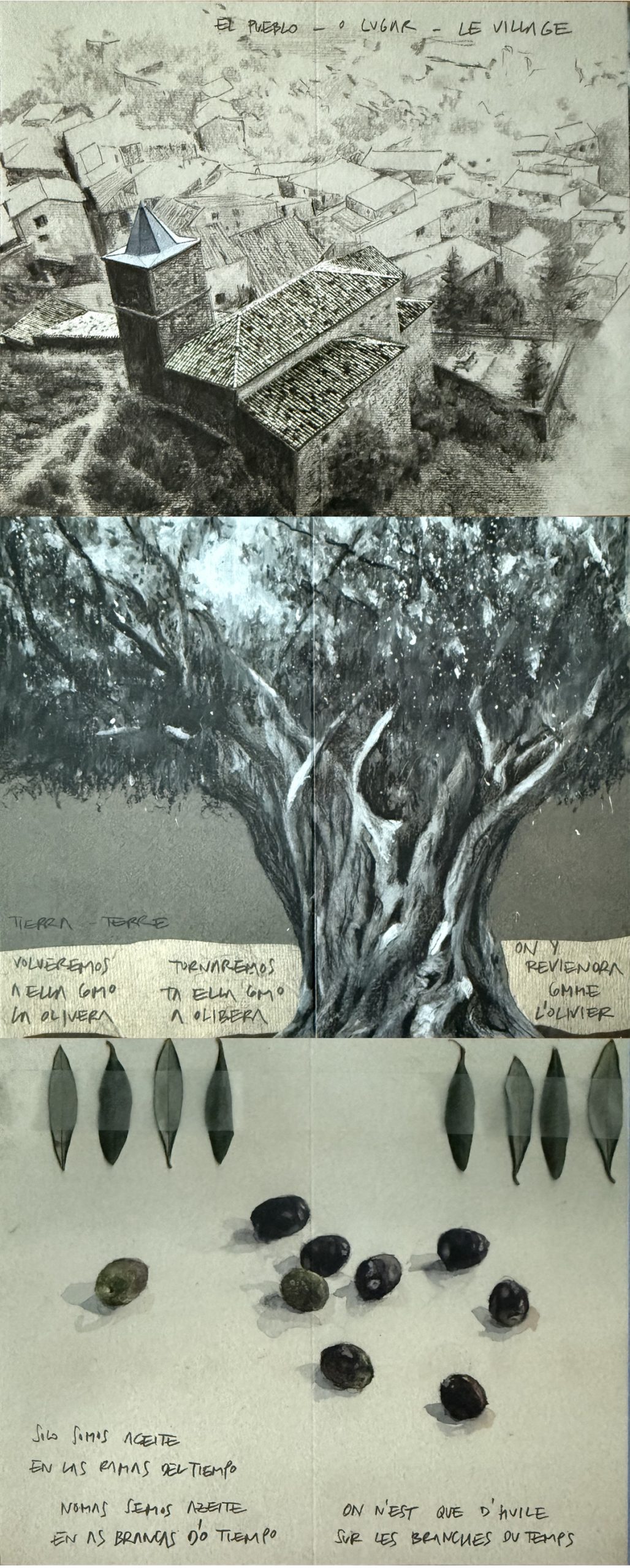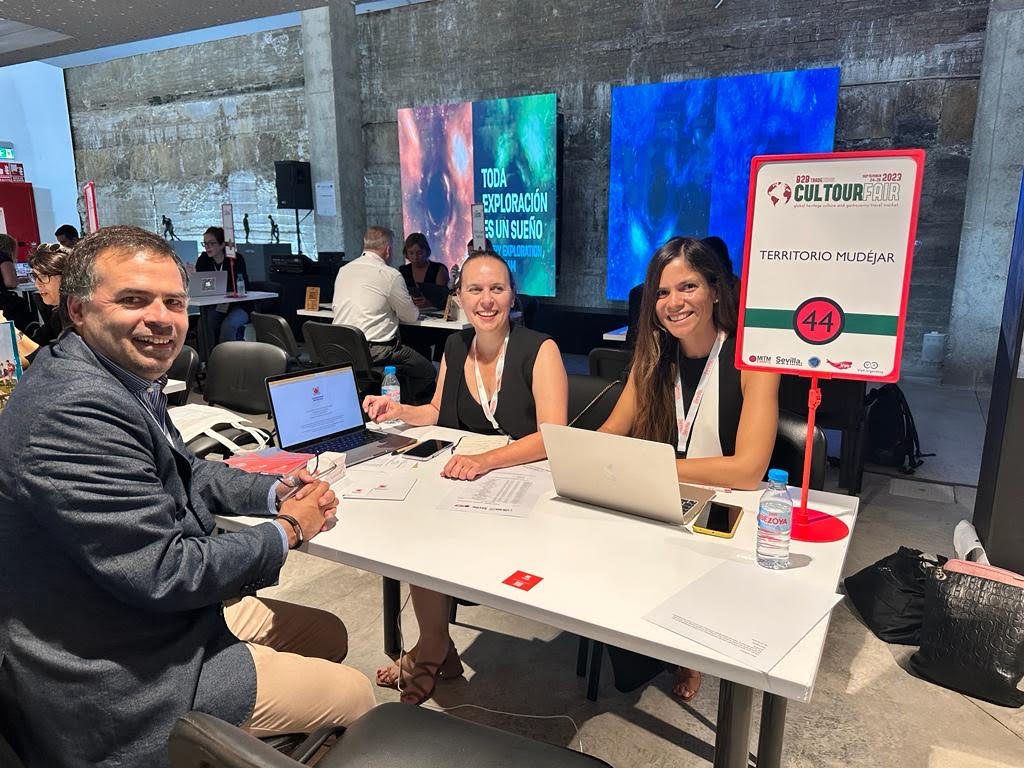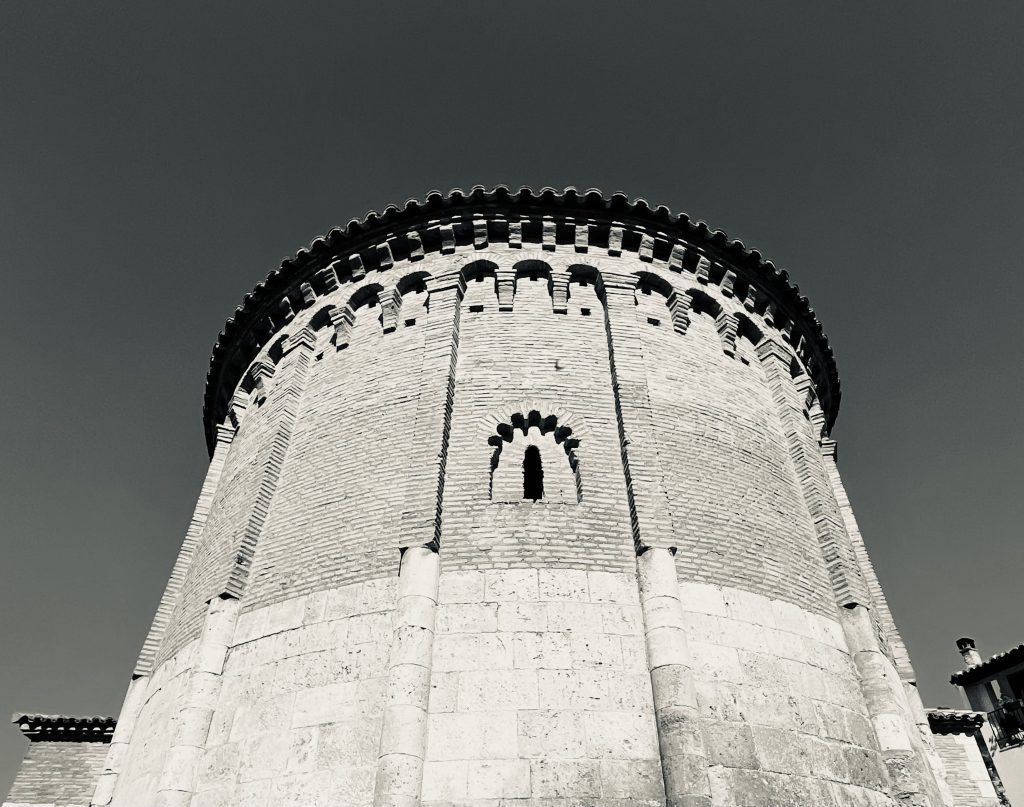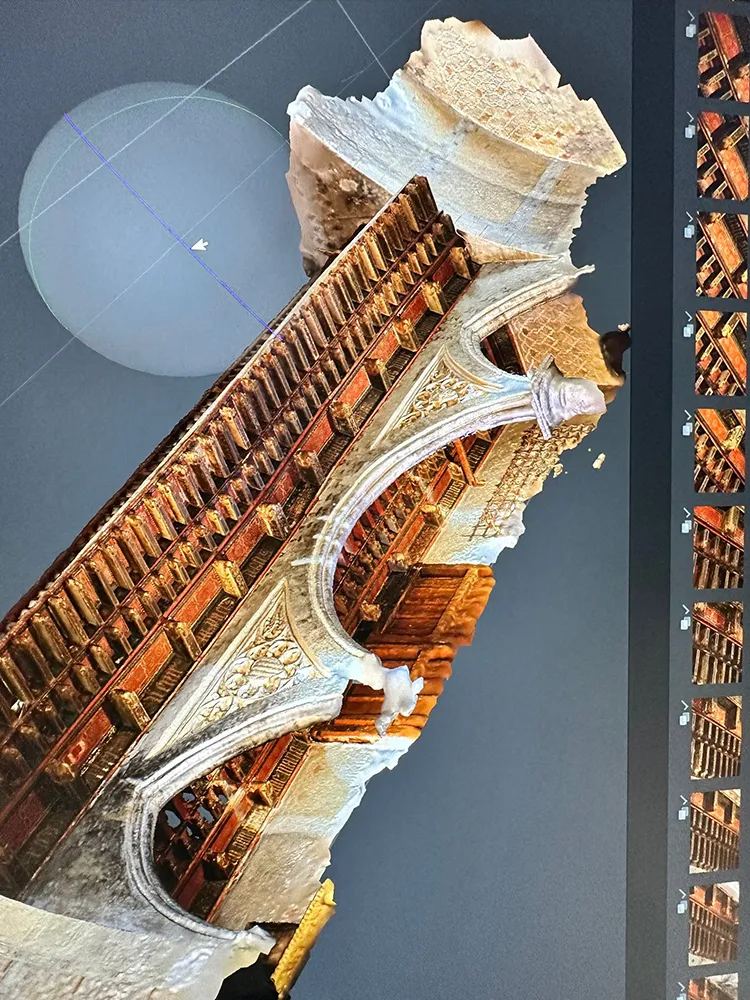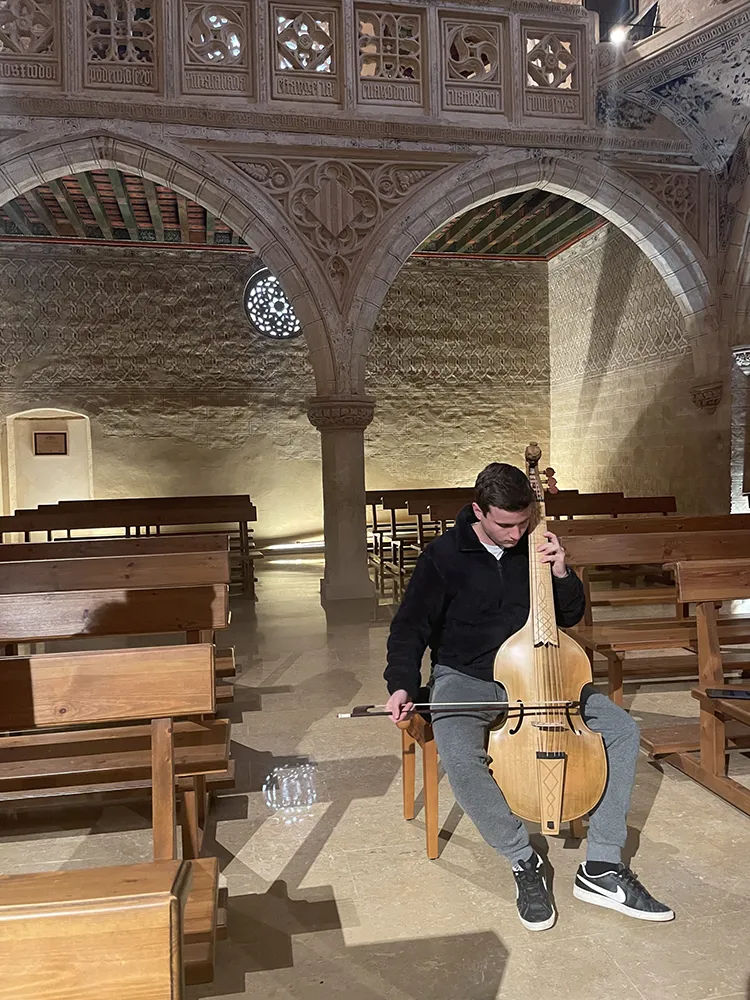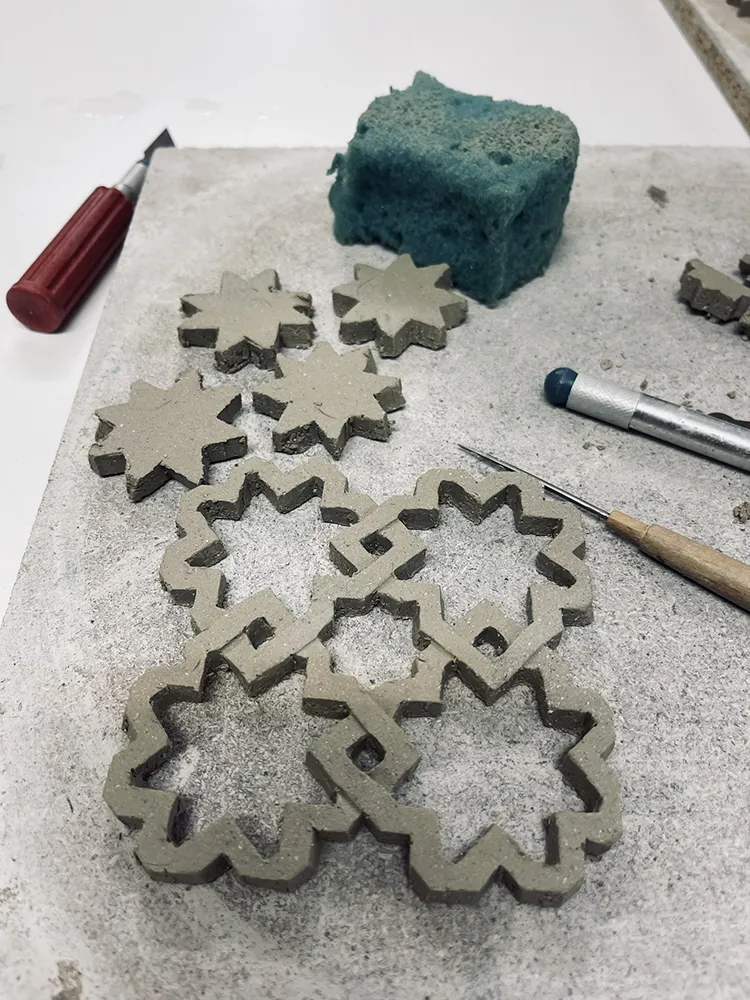6th Call for Applications for Research Stays for Projects and Artist Residencies “Gonzalo M. Borrás Gualis”
Submission deadline: Until October 31, 2025
Territorio Mudéjar announces the SIXTH EDITION of Gonzalo M. Borrás Gualis research stays and projects aimed at directly supporting the work of researchers and project promoters who want to work on the development of villages through the responsible and sustainable use of cultural and natural heritage resources.
The projects carried out since 2019 have strengthened this initiative as one of our initiative as one of our most important lines of of our most important lines of work based on the development of actions that enhance the retention and attraction of talent, actions aimed at the construction of highly qualified professional networks networks linked to the use of historical, artistic and cultural resources , contributing to medium- and long-term territorial development.artistic and cultural resources , contributing to medium and long-term territorial development.
Territorio Mudéjar is an association of local councils, currently comprising 49 member councils and one collaborating partner, whose objective is to consolidate a unified and collaborative management network for the use of historical and artistic resources linked to the important Mudéjar heritage, understanding them as a driving force for the development of towns and as an element of identity for the maintenance of the communities that make up our territory.
Our action program follows strategic lines aligned with the objectives of the 2030 Agenda, whose guiding principle is that “the cultural identity of territories will contribute to sustainable social and economic development by differentiating markets and, in turn, enabling their integration into a diversified economy that can ensure their future success.”
This project is dedicated to Professor Gonzalo M. Borrás Gualis, a staunch defender of the management of Aragonese heritage, villages, and territory, as an action of the people and as an innovative field of work with a promising future.
His work exemplified with perfect coherence the possibility of combining research work of high scientific impact with a commitment to the land and its people. of high scientific impact with a commitment to the land and its people, not only favouring the knowledge, conservation and dissemination of its historical-artistic heritage, but also by modernising work processes and by proposing innovative innovation projects in which natural, cultural and heritage resources are a key element in the future of the towns.
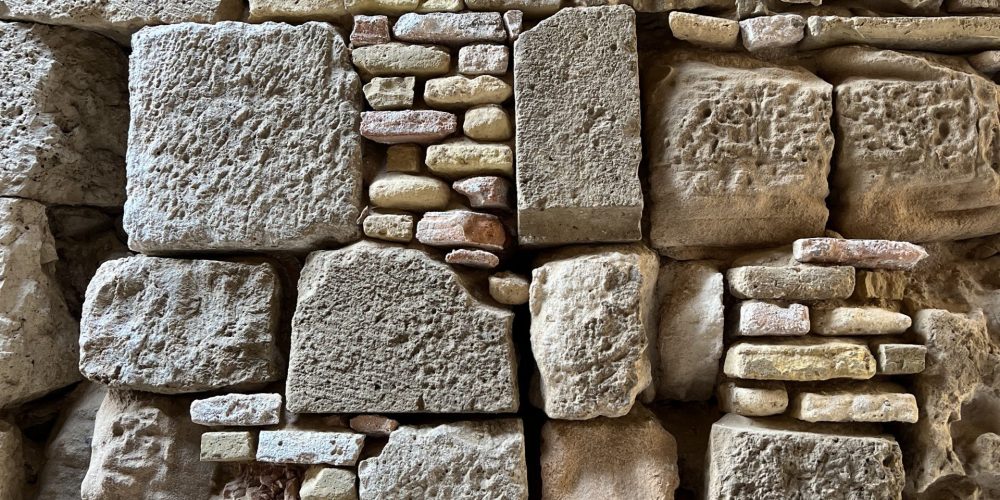
Transdisciplinary thinking, networking, and partnerships as tools for innovation
RESEARCH STAYS FOR PROJECTS. THE OPPORTUNITY TO FORM ALLIANCES WITH STRATEGIC ENTITIES AND PROFESSIONALS TO DEVELOP PROJECTS WITH GREATER IMPACT.
The activity, which began in 2019, has established itself as our organization’s most important strategic project, consolidating the R&D&I strategy with 29 pilot projects involving more than 40 management professionals.
The project was considered an exemplary case study by the Ministry of Culture and Sport at the World Heritage Managers Meeting held in Mérida in 2022.
It has also been considered an example of innovation and good practice in various European cooperation projects. In this regard, we should highlight our organization’s position, through the Estancias project, in the Interreg Europe program: between 2019 and 2023, as part of the MOMAr Models of Management for Singular Rural Heritage project, our project was chosen by the provincial government of Groningen and the Libau Foundation as a reference model for their Heritage Lab project, the centerpiece of their action plan. in 2024, our organization took part in the launch event for the REliHE Religious Heritage in Rural Areas project at the Polytechnic University of Turin, invited to present the project as a case study of good practices.
The long-term goal is to build an innovative structure that supports an international network designed to meet the needs of managing heritage resources located in villages.
Thus, in 2025, the association has partnerships with administrations and entities with which it shares objectives and methodology for growth: the Alliance of Cultural Landscapes and Related Sites, with management entities from fourteen UNESCO heritage sites; the Network of Medinas, within the framework of a collaboration on international projects and routes; the architecture and design department of the Polytechnic University of Turín and various other universities.
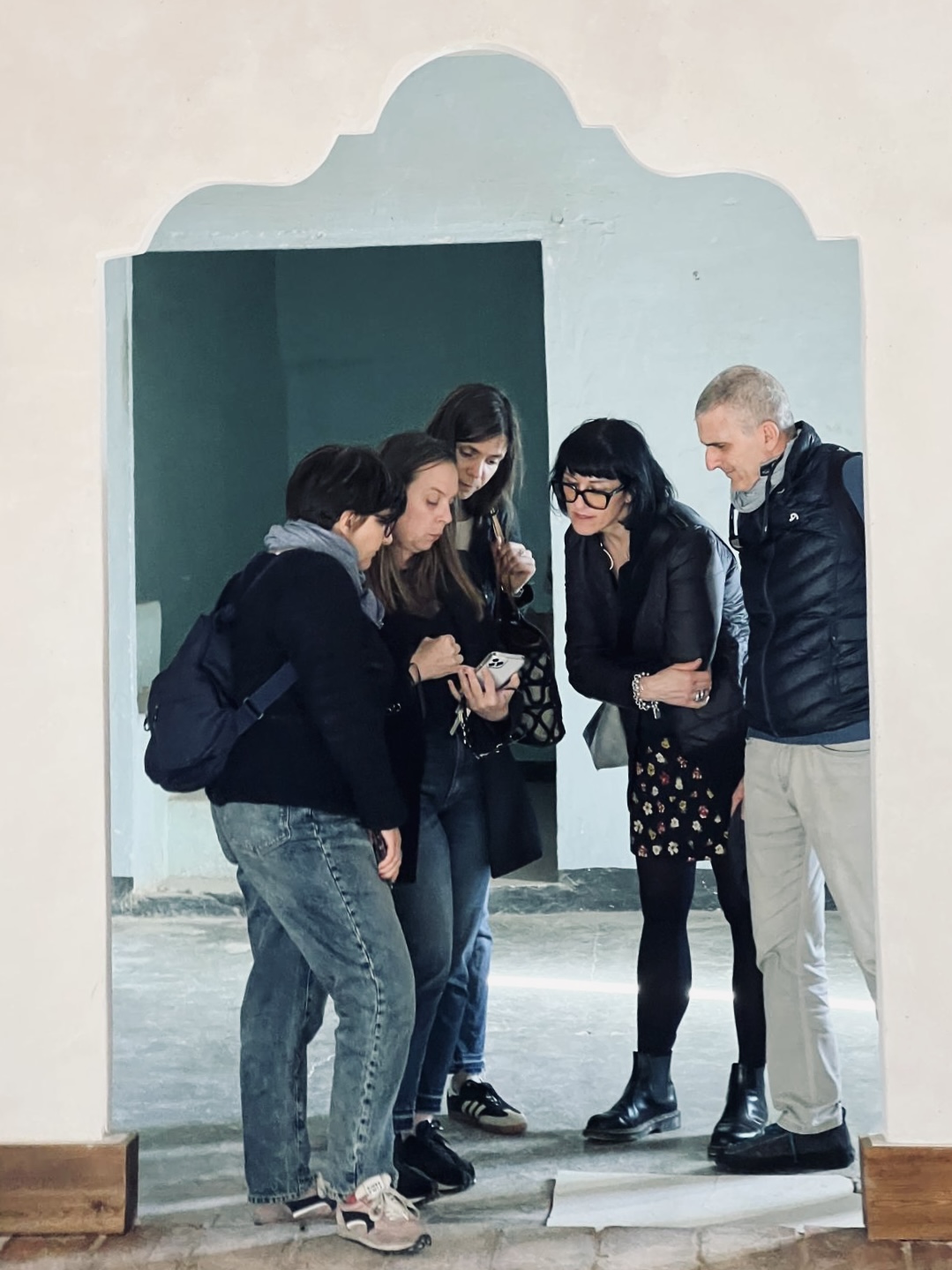
THE ARTISTIC RESIDENCY. THE PLACE WHERE IDEAS ARE BORN
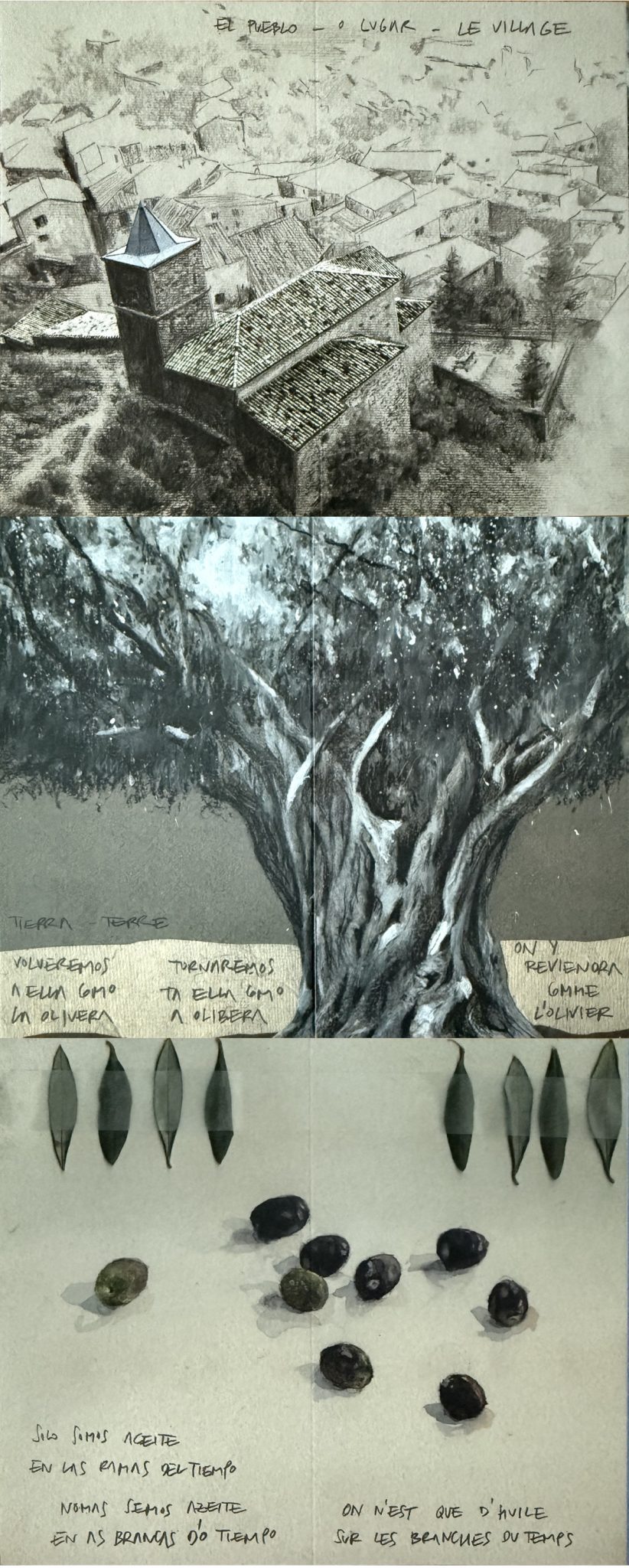
Since the 2022 call for proposals, the Estancias project has incorporated a work area called the Creative Laboratory, a space within the research for projects that allowed for the exploration of Territorio Mudéjar as a place of action and creativity, dissolving the boundaries between areas of knowledge, which were orderly and differentiated, and often led us to places that were complex to manage.
This workspace allowed us to work on the concept of “artistic residency” with the aim of understanding the heritage space and the context in which it is located as a multifaceted space, promoting artistic creation projects with a strong connection to the territory, the landscape, and/or the heritage space.
Following the success of the first call for artistic residencies, this area continues to focus on research, experimentation, exchange, learning, critical reflection, and the dissemination of local practices and knowledge through dialogue between artistic research, communities, the territory, places, and non-places.
The aim is to encourage the opening up of new processes and directions of knowledge in order to explore new paths; to foster creative thinking by generating spaces for dialogue and starting points between art, science, and technology from an artistic perspective, with a view to the development and maintenance of communities and their inhabitants.
To improve the monitoring and support process for the selected residency, this second call for applications focuses on working with the concept of Cultural Landscape, in support of the designation of Cariñena as European Wine City 2025.
CONSULT:
- Chema Agustín. The Mudejar and Euclidean geometry or plane geometry
- Victor Solanas. Mudéjar RGB
- Pilar García Verón. The wall as dermis. Light in Mudejar architecture
- Javier Seral. Mudéjar clay
- Patricia Álvarez. Incorporate. On vulnerability, or how to embody knowledge
- Carlos Bonal. Sound contexts
Image: Courtesy of the artist-researcher ©ChemaAgustín Riglorámico Project
DIGITALISATION = STRATEGIC TOOL
The management of historical, artistic and cultural heritage is evolving rapidly thanks to digital technologies. The challenge now is to apply a strategic vision to these processes and the unprecedented opportunities offered by new technologies, and to use them in the most and the unprecedented opportunities offered by new technologies and to use them in the most efficient way possible, ensuring that the efforts efficient way possible , ensuring that the efforts made at this time of “boom ” have a long “boom” are sustainable over time and allow for the development of future projects.
Therefore, one of the criteria being continued this year is that all deliverables in a digital version (photographs, photographs, videos, etc.) must year is that all deliverable products in digital version (photographs, videos, digital models, audio files, etc.) must be videos, digital models, audio files, etc.) comply with the study Study on quality in 3D digitisation of tangible cultural heritage: mapping parameters, formats, standards, benchmarks, methodologies, and guidelines published in 2022 and follow the lines of work indicated in the recommendation of 10/11/2021 on a common European data space for cultural heritage , thus adapting the quality criteria in this way quality criteria established in the in the Digitalisation Strategy of Territorio Mudéjar.
This strategy is in line with the latest recommendations of the European Commission and also takes into account, the standards of the most commonly used platforms and repositories such as Europeana and such as Europeana or Google Arts.
The aim of Territorio Mudéjar is for all projects to have a digital focus that allows for the implementation of adapted transfer channels. To this end, all beneficiaries of the aid will receive information and training on the Territorio Mudéjar Digitalization Strategy during the first phase of their project and will be monitored continuously throughout its development to help them comply with it.
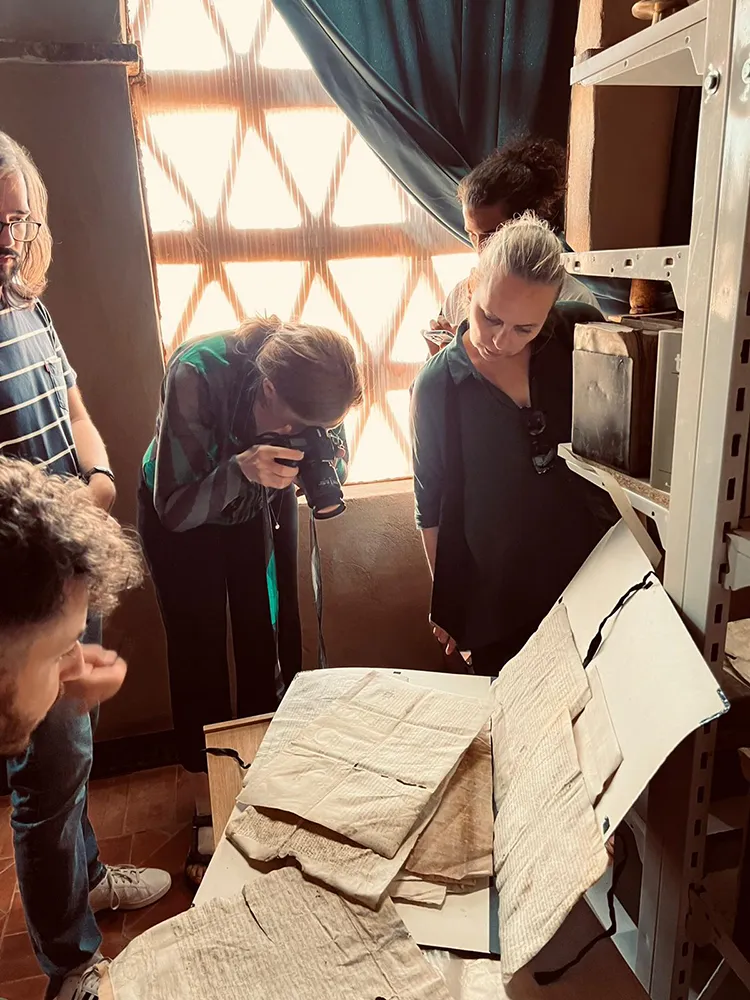
Terms and conditions of calls for applications
Research for projects: modality 1
THE USES OF HERITAGE IN THE VILLAGES OF THE MUDÉJAR TERRITORY
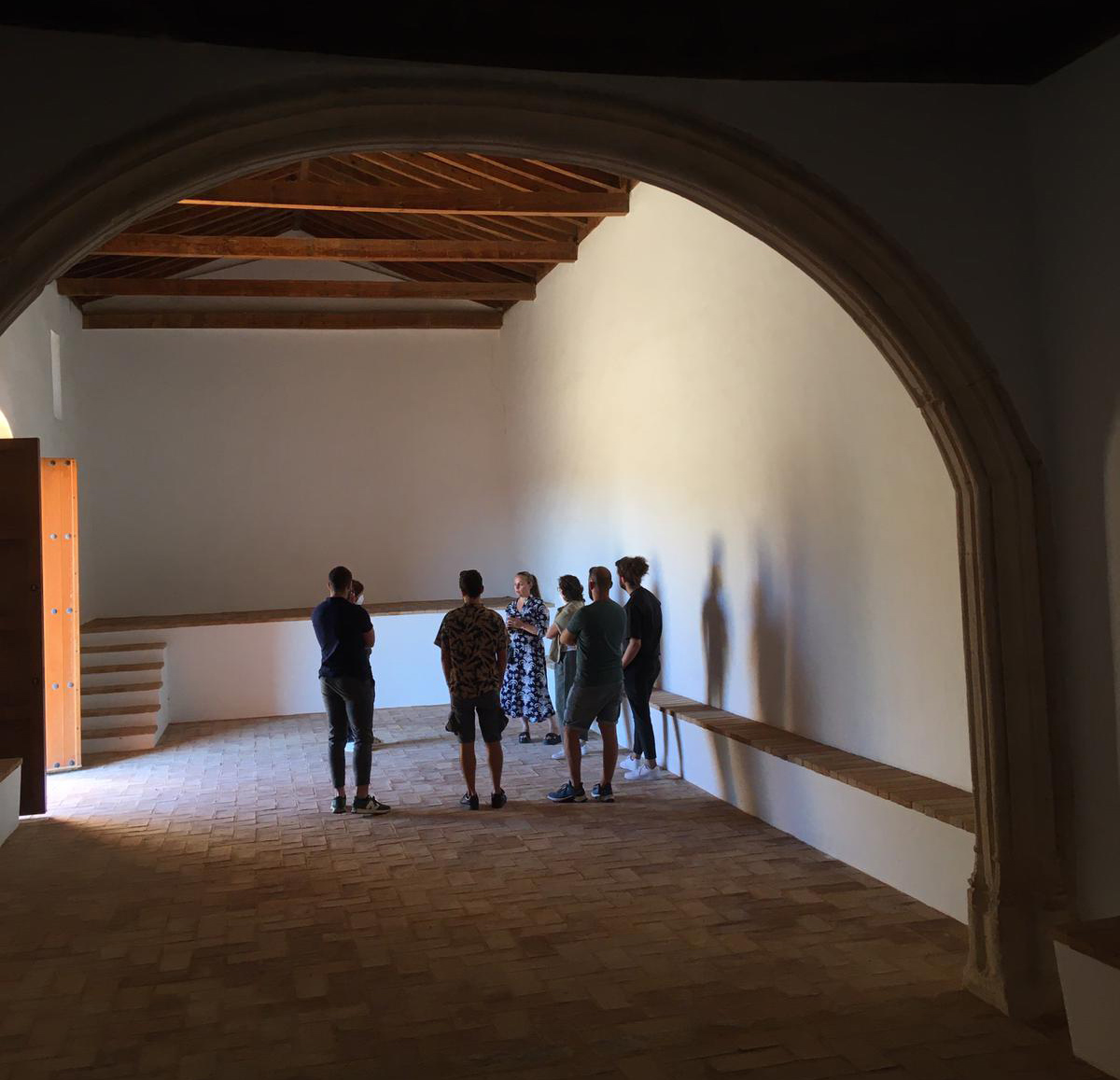
AMOUNT: €7,500
DURATION OF THE SCHOLARSHIP: Between 4 and 7 months.
CONTEXT: Interreg Europe Project. REliHE Religious heritage in rural areas.
COMMENTS: The proposal must include a minimum justified stay in two member towns of Territorio Mudéjar. It will be evaluated based on the project submitted.
Research and projects: modality 2
MODELS FOR MANAGING THE MONUMENT AND ITS PROTECTED ENVIRONMENT FROM THE PERSPECTIVE OF AUTHENTICITY AND PREVENTIVE CONSERVATION
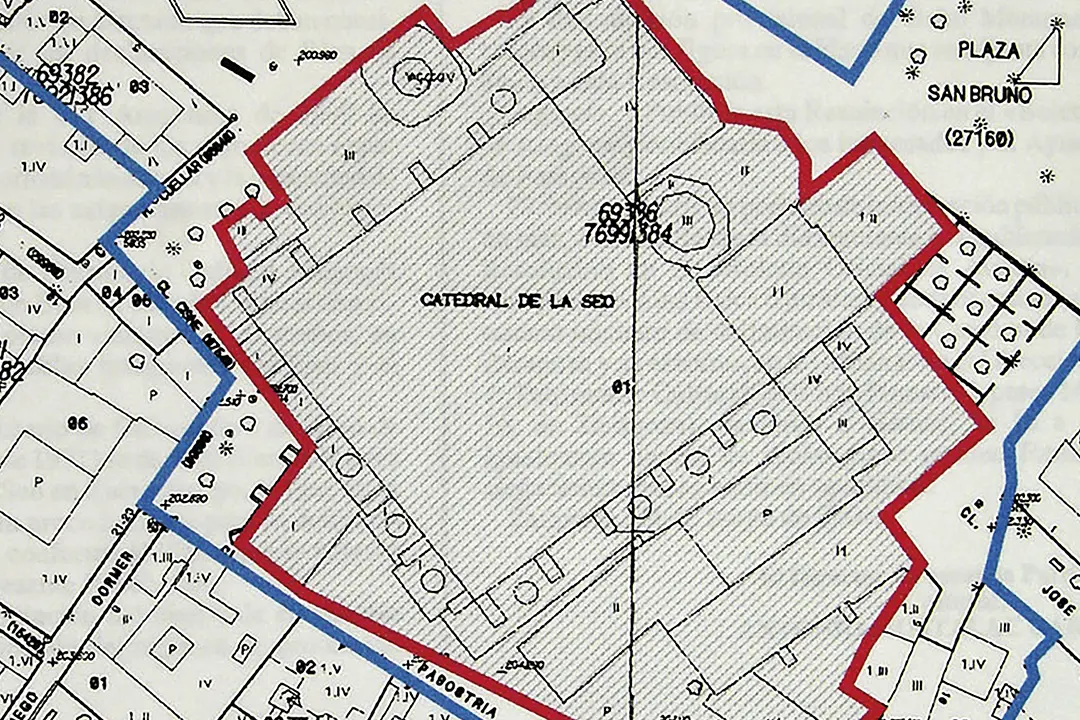
AMOUNT: €7,500
DURATION OF THE SCHOLARSHIP: Between 4 and 7 months.
CONTEXT: Collaboration with the parish of La Seo in Zaragoza. The Archbishopric of Zaragoza has been an honorary member of Territorio Mudéjar since 2018.
COMMENTS: The proposal must include a justified minimum stay in at least two member towns of Territorio Mudéjar and work with a minimum of three monuments. It will be evaluated based on the project submitted.
Research and projects: modality 3
STUDY OF ALABASTER PLASTER AND ITS IMPACT ON THE TERRITORY: INNOVATION AND QUALITY FROM ITS HISTORICAL STUDY
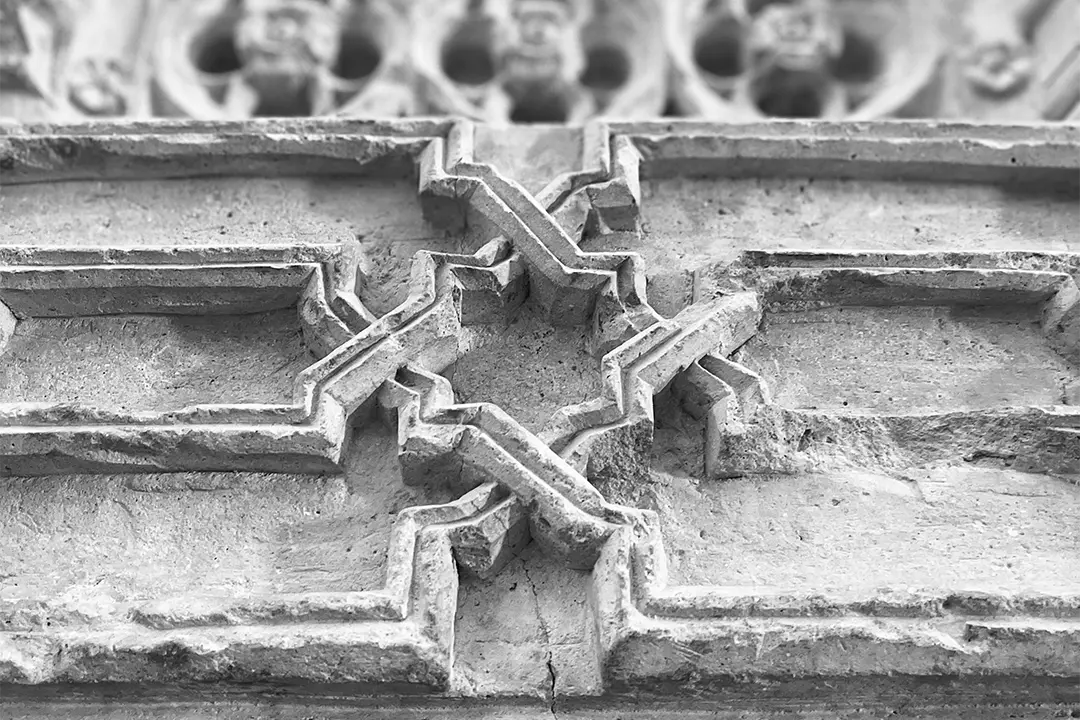
AMOUNT: €7,500
DURATION OF THE SCHOLARSHIP: Between 4 and 7 months.
CONTEXT: Collaboration with CIDA, the Alabaster Development Center.
COMMENTS: The proposal must include a justified minimum stay in at least four member locations of Territorio Mudéjar and CIDA. In addition, work must be carried out on at least two monuments and two landscapes. It will be evaluated based on the project submitted.
Artistic residencies
CULTURAL LANDSCAPE: ARTISTIC STUDY OF THE WINE LANDSCAPE
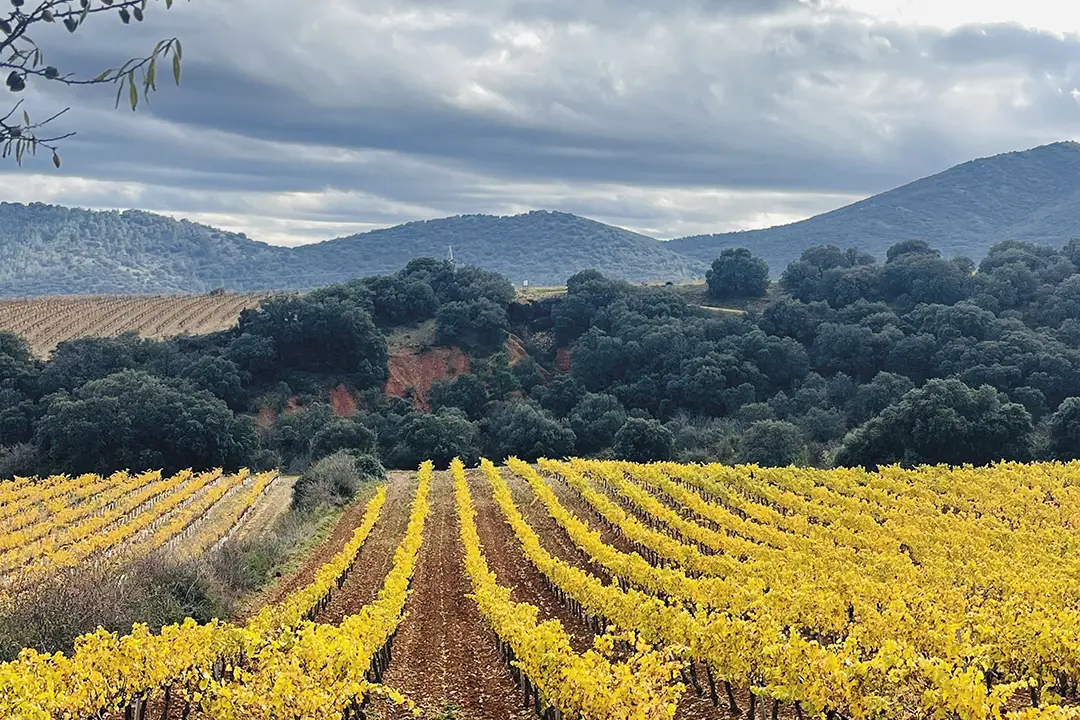
AMOUNT: €4,500
DURATION OF THE SCHOLARSHIP: Between 4 and 7 months.
CONTEXT: Cariñena European City of Wine 2025.
COMMENTS: The proposal must include a justified minimum stay in Cariñena and in at least two member towns of Territorio Mudéjar. It will be evaluated based on the project submitted.
Activities and promotional events related to the call for applications
If you are interested, please contact us at: info@territoriomudejar.es
Schedule to be determined
Visits to heritage sites in the towns of the Mudéjar Territory for evaluation as case studies.
September 25. [12:00 p.m. – 12:30 p.m.]
La Almunia de Doña Godina. San Juan Palace.
Opening and presentation of the exhibition “Territorio Mudéjar La Guía” Project resulting from the 2020 call for residencies.
September 30 [10:00 am - 11:00 a.m]
Albalate del Arzobispo Castle. Integral Center for Alabaster Development.
Webinar: Key points for applying for the call for proposals.
Open to the public in person
October 14 [10:00 a.m -11:00 a.m]
Location to be determined.
Webinar: Key points for applying for the call for proposals.
Open to the public in person
October 21 [10.00h-11.00h]
Location to be determined.
Webinar: Key points for applying for the call for proposals.
Open to the public in person
